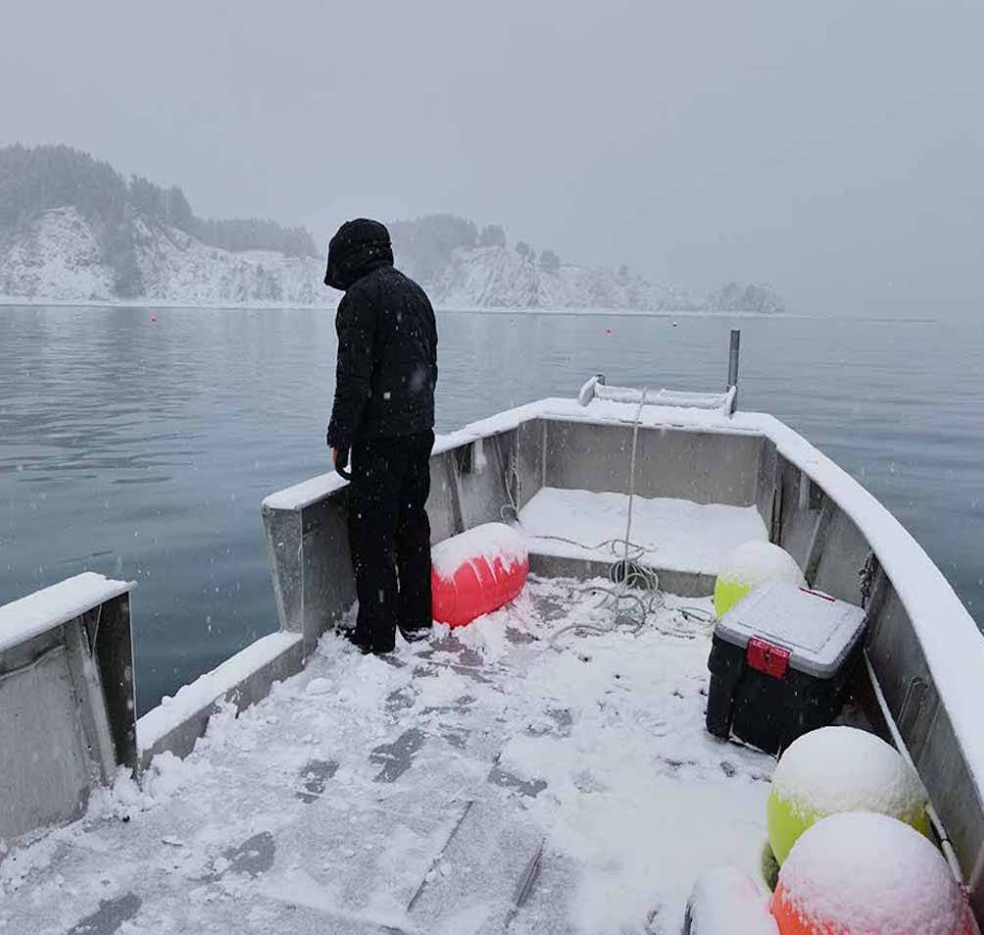Your gear
Back to: Monitoring & Maintenance
Once your seed is safely in the water, you can take a deep breath. The time-sensitive nature of the fall season is behind you. Now begins the long and steady process of tending to your crop through the winter months with routine monitoring and maintenance. Although kelp doesn’t need inputs to grow, it does still require your attention during the months it’s in the water. It’s easy to get complacent as the weather turns cold and getting out on the water is harder to do. But the ocean is a fickle beast; storms and accidents happen when you least expect them. Staying vigilant through the winter to make sure your farm is performing as it’s designed, and addressing issues as they arise, is critical to the ultimate success of your crop.
As you create a routine of monitoring and maintenance on your farm, you’ll want to pay attention to two things:
-
-
Your kelp

Definition
Monitoring
Monitoring your gear means checking to ensure that the infrastructure of your farm is performing as intended. Are your arrays in alignment? Are your growlines tight? Is the kelp at the appropriate depth? Are there any points of chafing or potential failure in the system?
Definition
Maintenance
Maintenance refers to any adjustments or fixes to the farm gear itself. Replacing a connection point that’s showing signs of chafing, adjusting your tensioning, adding flotation to the system, and just generally being responsive to problems that arise.
We recommend checking your gear for the first time a few days after you outplant. It’s common for lines and gear to shift in the water right after you’ve adjusted them. This gives you an opportunity to spot if anything has gone seriously wrong. If your seed string broke and unraveled, for example, it might be possible to reseed the damaged lines. If you wait too long to do your initial check, you’ll have missed the opportunity to correct early mistakes.
After this initial baseline assessment, you’ll want to settle into a routine cadence of monitoring and maintenance for the next few months. If possible, it’s a good idea to put eyes on your farm every week to two weeks throughout the course of the season. This could be as simple as a cursory drive by where you count your buoys, make sure your arrays look straight, and check from the surface that nothing is obviously wrong. Then you might do a more thorough and detailed inspection of your gear once every three weeks to a month.
Come March, you’ll begin taking growth measurements of your kelp to help you track the growth rate and quality of your kelp over time. This information can help you predict your yield later in the season, identify any biofouling early on, and serve as a record to compare against for future years. Crop and gear monitoring can typically be done together on the same day.
Your monitoring cadence will change based on the size of your farm, but in general, we recommend you consider the following rhythm of monitoring activities.
Every Trip
- Visual check of marker buoys
- Identify and remove debris
- Drive-by check to ensure arrays are properly aligned
Every Month
- Collect growth measurements and water quality samples
- Inspect marker buoys
- “Walk” longlines – Check/repair seed string breakage
- Inspect/repair gear connection points
As Needed
- Check and adjust line tension
- Add or remove flotation
If you see any protected species of marine mammals in the waters near your farm, make a record of the sighting. Even if the animal isn’t interacting with your farm gear, it’s still useful information. The more recorded evidence of positive or neutral interactions between marine mammals and ocean farms will only benefit the industry.